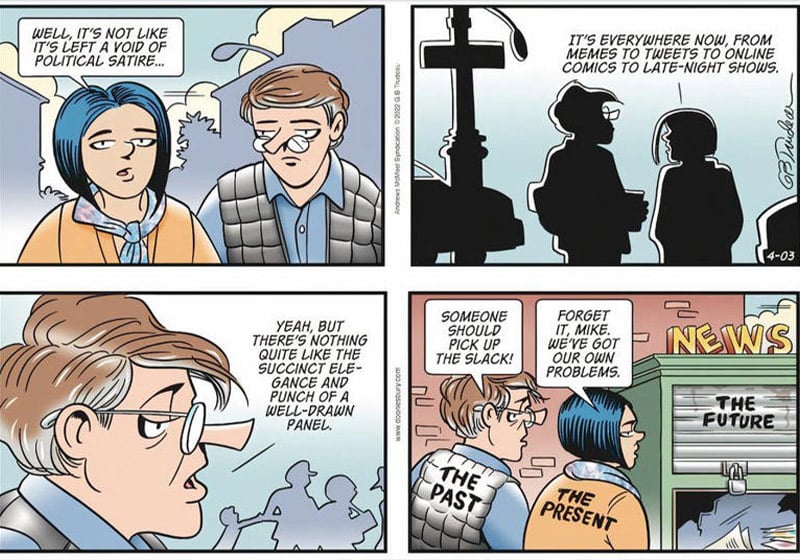Table of Contents
What is graphic journalism?
There are many different ways of describing what’s going on in the world. Traditional journalism uses the written word, but over the last few decades, a new way of presenting news events, novels based on real-life events and historical essays has emerged, typically known as graphic journalism or comics journalism.
Graphic journalism is a genre that combines investigative journalism and comics, and in some cases photojournalism and data journalism, to describe real-life events through drawings and images. This hybrid form of communication has an immediate and visual language that effectively conveys information, emotions and atmospheres in situations where text alone would struggle.
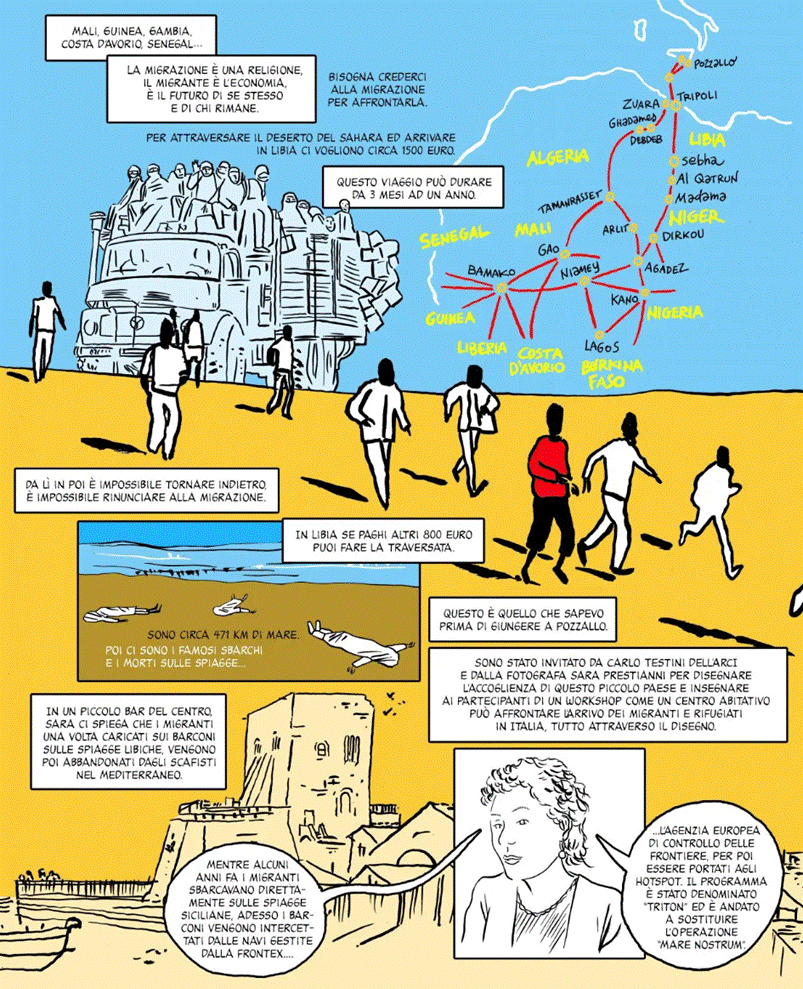
Graphic journalism also has the power to immerse readers in the events being described via the author’s empathic gaze, as seen over the years in work by figures like Joe Sacco, Gianluca Costantini and Emmanuel Guibert.
What is graphic journalism?
Graphic journalism is a form of journalism that uses comics and graphical elements as a narrative tool to tell real stories. It combines elements like interviews, field research and direct observation with drawings that summarise the situation, thereby conveying the events’ emotions more directly and effectively.
For this reason, graphic journalism is used widely by authors across the world to document conflicts, social injustice, politics and humanitarian crises, and it is also a powerful tool for raising public awareness of various issues.
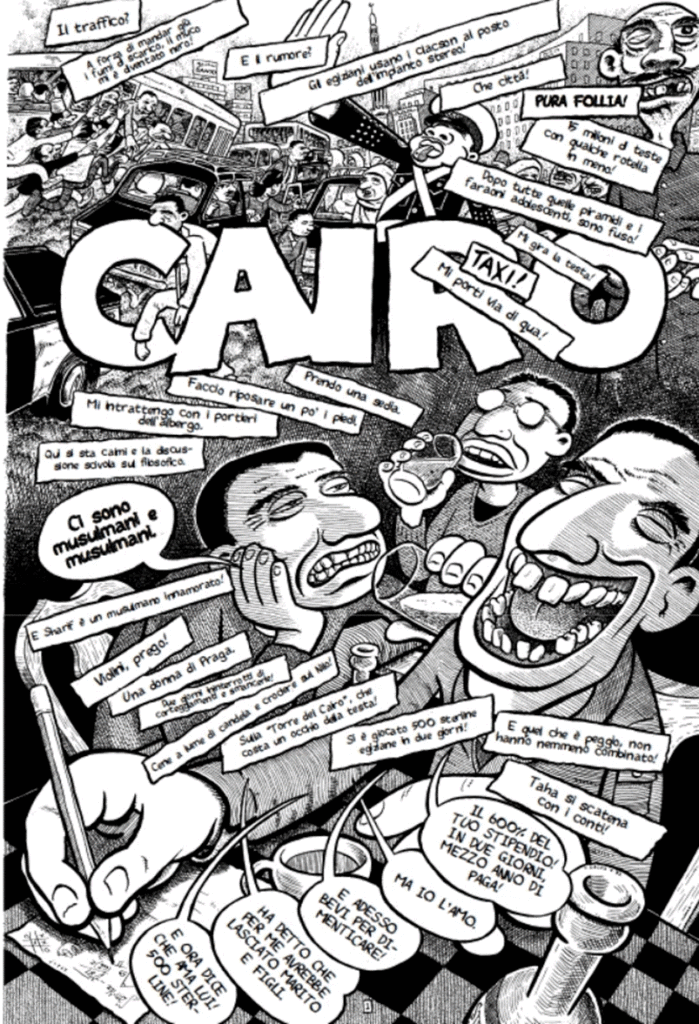
Unlike journalism based solely on the written word, comics journalism often adopts a subjective viewpoint, meaning the author’s interpretation of the events described plays an important role. However, it is still backed up by journalistic rigour; the stories are based on real events and verified by reliable sources.
The journey from its origins to today’s stories
Forerunners of graphic journalism include the lithographers Currier and Ives, who illustrated the battles of the American Civil War, and political cartoonists like Thomas Nast. Before the invention of photography, publications like The Illustrated London News and Harper’s Magazine made frequent use of illustrations, and particularly lithographs, to describe news events.
In 1920, the political magazine New Masses sent cartoonists to cover strikes and trade union disputes, but these stories were limited to individual cartoons, not sequences of drawings. During the 1930s and 1940s, artists like Will Eisner and Milton Caniff experimented with graphical ways of telling stories inspired by real-life events.
Beginning in the 1950s, Harvey Kurtzman produced pieces of graphic journalism for magazines like Esquire and TV Guide, and in 1965 Robert Crumb published Bulgaria: A Sketchbook Report for Help! magazine – a tongue-in-cheek overview of socialist Bulgaria.
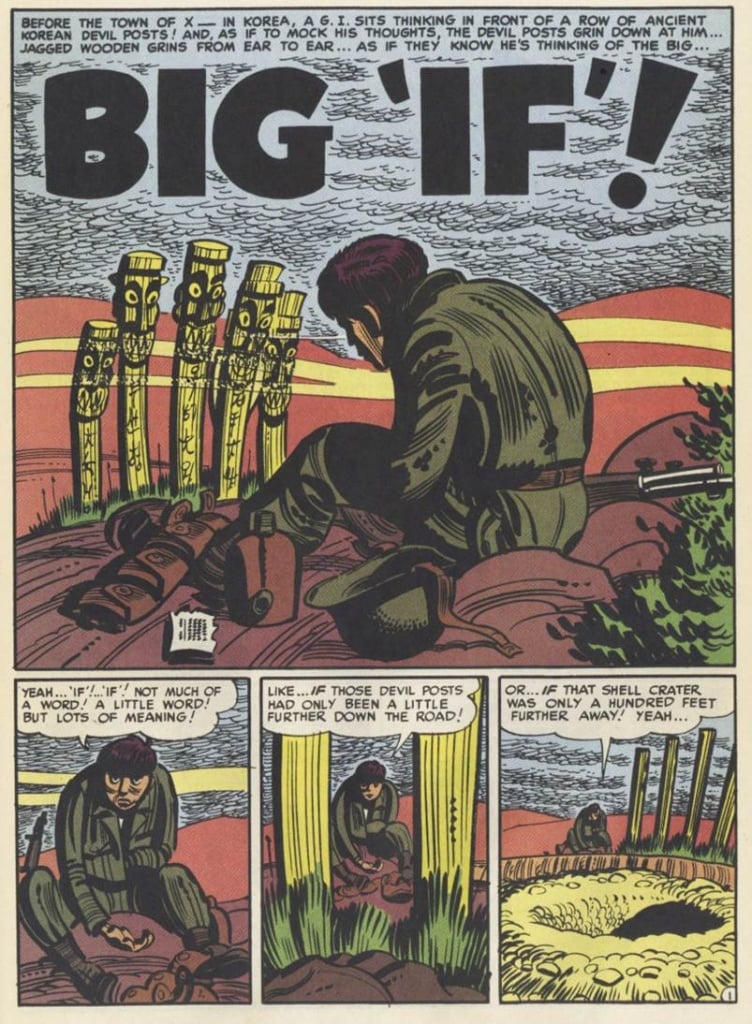
Leonard Rifas was one of the first people to create proper comics reportage, with his series Corporate Crime Comics (1977–1979). However, the true pioneer of graphic journalism as we know it today was Joe Sacco, whose work Palestine, published between 1991 and 1993, described his travels between the West Bank and the Gaza Strip in that period.
Over the years, many other cartoonists have tried their hand at the genre, from Bill Griffith to Art Spiegelman. In 2016, the New York Times put graphic journalism at the heart of its work for the first time with Patrick Chappatte and Anne-Frédérique Widmann‘s Inside Death Row, a five-part series on the death penalty in the USA.

In 2002, the committee of the Pulitzer Prize, the most prestigious journalism award, changed the name of the Pulitzer Prize for Editorial Cartooning (founded in 1922) to the Pulitzer Prize for Illustrated Reporting and Commentary, thereby giving proper recognition to comics journalists for the first time.
Graphic journalism techniques and formats
The illustrations in graphic journalism do not usually simply support the text; the drawings have their own independent function. Each panel helps to create a visual flow that guides the reader through the events.
The choice of whether to use black and white or colour has a significant impact on the story’s tone: black and white is often used to convey a sense of urgency and harshness, like in Joe Sacco‘s work, while colour can help make complex topics more accessible, as seen in Waltz with Bashir by Ari Folman and David Polonsky.

And these are not just drawings: the stories are all based on events that really happened. The authors typically carry out in-depth research, listen to first-hand accounts and travel to the events’ location to create live sketches or to take photos to use as inspiration for the illustrations.
This approach ensures the stories being relayed are accurate, making them a powerful reporting tool.
Interviews play a very important role: witnesses’ words are often incorporated directly into the panels through balloons or captions and with no interpretative filters, giving the narrative a more authentic feel.
Graphic journalism can appear in several different formats, each combining the genres of comics and journalism in a different way:
- Cartoons as editorials: a single-panel cartoon in a graphic journalism style can be paired with an editorial in a newspaper, a piece expressing the political opinion of the publication in question. This is often seen in daily newspapers, such as Il Manifesto and La Repubblica in Italy, or Le Monde in France. Leading proponents of this style include Plantu, the long-standing satirical cartoonist at Le Monde and Sergio Staino, the cartoonist who for years has brought the issues discussed in L’Unità to life.

- Columns as strips: comic strips are another very popular format in daily and weekly papers, sometimes paired with a short, sharp and often controversial comment on current affairs. The most famous example of this is Garry B. Trudeau‘s strip Doonesbury, which has appeared in hundreds of US newspapers over a 40-year period.

- Comics reportage: these are illustrated articles or stories that appear in magazines like the Italian Internazionale and newspapers, on online platforms or as independent volumes sold in bookshops. In the world of journalism they are also known as ‘features’: articles that go beyond simply narrating the facts. As well as the aforementioned Joe Sacco’s works, another recent example of reportage in illustrated form is Salvation by Lelio Bonaccorso.

- Journalistic web comics: since the advent of digital technologies, many artists have chosen to publish short stories or series in episodes directly on their blogs or on social media, facilitating the real-time spread of information. Sites like Graphic News, which specialises in publishing digital graphic journalism, contain a range of online stories to devour.
Four examples of graphic journalism
When graphic journalism started reaching a wider audience in the 1990s, it also kickstarted an incredible evolution process, giving rise to increasingly ambitious and complex works. Across the world, magazines like the Italian publication Mamma! have multiplied, along with – more recently – titles like La Revue and Topo that describe the world to children.

However, there are certain works that every reader interested in comics journalism should have on their bookshelf. Here are a few we’d particularly recommend:
1 – Palestine by Joe Sacco
Joe Sacco’s Palestine was many people’s first experience of graphical journalism, and is widely considered the first true example of the genre as we know it today. The author uses comics to describe his travels in Palestine in 1991 and 1992: he explored the place, spoke to people, gathered information and then reported it all through both pictures and words in one large story.
It is a real piece of comics reportage, where the author is at the heart of a chronological narrative. It includes some crude and dramatic images, in a style that borders on grotesque: Sacco’s meticulous artistic approach has inspired countless artists to follow in his footsteps.

2 – The Photographer by Emmanuel Guibert, Didier Lefèvre and Frédéric Lemercier
This is a striking example of photojournalism combined with graphic journalism. The Photographer is now a classic of the genre: a touching piece of reportage describing photojournalist Didier Lefèvre‘s journey through war-torn Afghanistan.
In 1986, Lefèvre set out for the country – destroyed in those years by the war between the Soviet Union and mujahideen – with a group from Médecins Sans Frontières. The work is not limited to the over 4,000 photographs he took while he was there: a few years later, the cartoonist Emmanuel Guibert collected the photos that had changed the life of his childhood friend and created a unique work that combines photography and drawing.

3 – Rolling Blackouts by Sarah Glidden
An intense and reflective work that further expanded the horizons of graphic journalism. In this piece of comics reportage, the cartoonist Sarah Glidden accompanies two journalist friends and founders of an NGO on a journey through Turkey, Iraq and Syria to investigate the effects of the war in Iraq and the conditions faced by refugees. They are joined by an ex-marine, Glidden’s childhood friend, whose presence introduces some unexpected and sometimes uncomfortable perspectives.
Using delicate watercolours and a lucid, sensitive way of looking at the world, Glidden not only tells the stories she collects from sources including Iranian bloggers, UN officials, Iraqi refugees and local taxi drivers, but also provides a behind-the-scenes look at a journalist’s work: how a piece of news is assembled, the questions you need to ask, and how filters can influence the way the story is narrated. Rolling Blackouts is a silent yet powerful work that questions journalism’s role in conflicts and in describing the world.
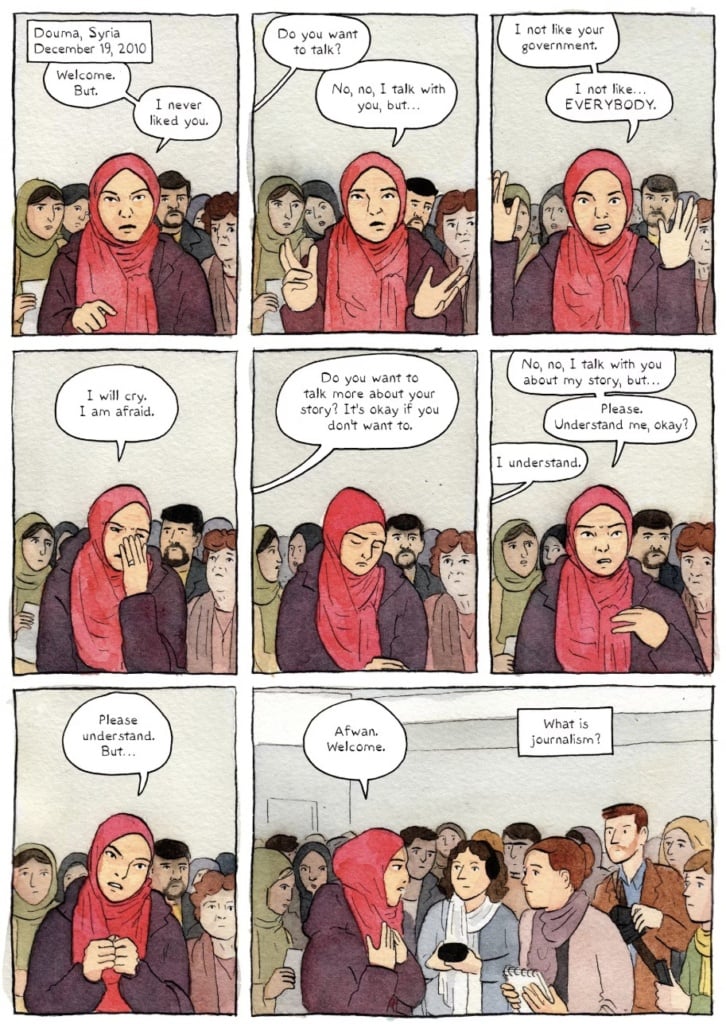
4. Kobane Calling by Zerocalcare
Kobane Calling by Zerocalcare is a report on the war in Syria and the Kurds’ resistance in Kobane. Although the author is not a journalist, we can still call it graphic journalism, as it sincerely and directly describes his experiences in the Middle East. The comic was inspired by three journeys in Turkey, Iraq and Syria, and documents the Kurdish resistance against Isis, Turkey’s ambiguous role and the contradictions in Western information.
The result is a work that is moving and provokes reflection, intertwining accounts collected in the field with a profound sense of political and human responsibility.
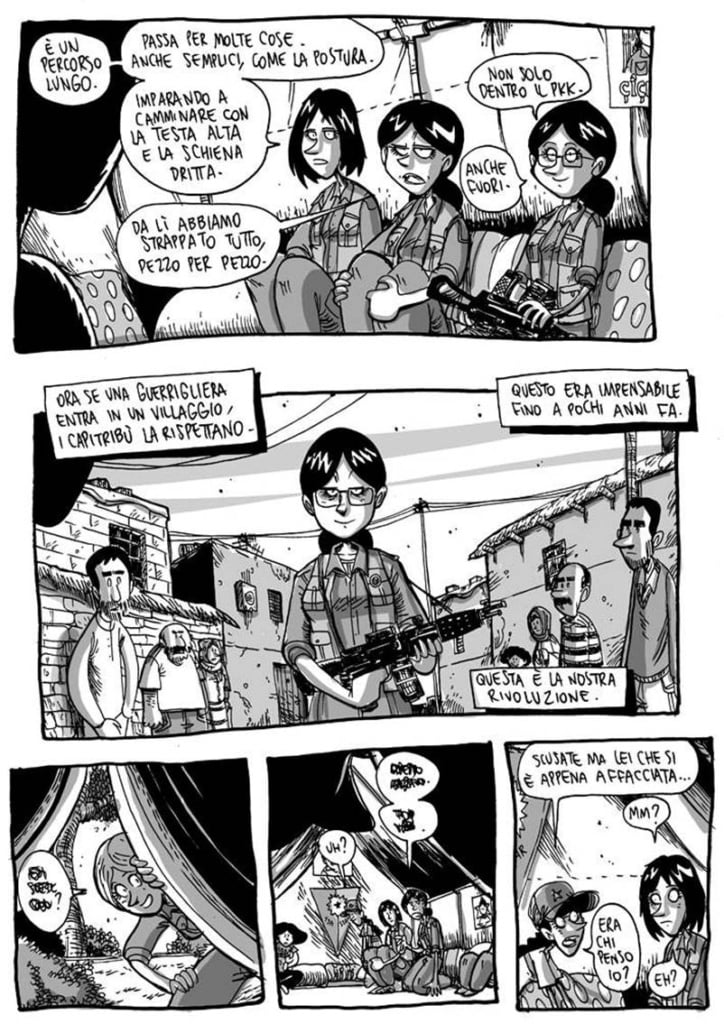
We’ve reached the end of our short exploration of the world of graphic journalism: a truly unique genre and source of information. There are countless works to explore – we highly recommend delving into them to broaden your perspectives and knowledge.

